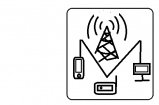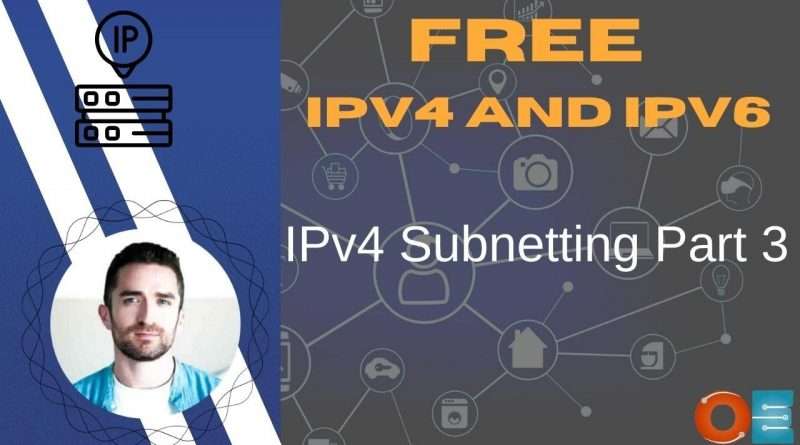IPv4 and IPv6 Subnetting | Video 06 | IPv4 Subnetting Part 3 |
Free IPv4 and IPv6 Subnetting. IPv4 Subnetting Part 1 is shared in this video.
IPv4 (Internet Protocol version 4) is the standard address format that lets all machines on the internet communicate with one another. IPv4 is written as a 32-bit string of digits, and an IPv4 address is composed of four numbers, each between 0 and 255, and separated by periods.
IPv6 (Internet Protocol version 6) is an updated standard for identifying computers on the internet. Like IPv4, it gives every device a unique identifier, but one that has been adjusted to accommodate the increasing number of computers connected to the internet today.
IPv6 increases the number of possible IP addresses from IPv4’s 4 billion all the way up to 340 trillion trillion trillion. IPv6 is written as a 128-bit hexadecimal string of digits, and a typical IPv6 address looks something like this:
// Menu //
00:00 -Course Outline
0:39- IPv4 Subnetting
6:25 – Aspects of a Network/subnet
8:08 – Network Address
8:34 – Broadcast Address
9:03 – Maximum number of host addresses
9:40 – First Usable Address
10:13 – Last Usable Address
12:20 – Identify the network address
13:41 – Review
14:38 – Practice
// Orhan’s Social //Free IPv4 and IPv6 Subnetting. IPv4 Subnetting Part 1 is shared in this video.
IPv4 (Internet Protocol version 4) is the standard address format that lets all machines on the internet communicate with one another. IPv4 is written as a 32-bit string of digits, and an IPv4 address is composed of four numbers, each between 0 and 255, and separated by periods.
IPv6 (Internet Protocol version 6) is an updated standard for identifying computers on the internet. Like IPv4, it gives every device a unique identifier, but one that has been adjusted to accommodate the increasing number of computers connected to the internet today.
IPv6 increases the number of possible IP addresses from IPv4’s 4 billion all the way up to 340 trillion trillion trillion. IPv6 is written as a 128-bit hexadecimal string of digits, and a typical IPv6 address looks something like this:
// Menu //
00:00 -Course Outline
0:39- IPv4 Subnetting
6:25 – Aspects of a Network/subnet
8:08 – Network Address
8:34 – Broadcast Address
9:03 – Maximum number of host addresses
9:40 – First Usable Address
10:13 – Last Usable Address
12:20 – Identify the network address
13:41 – Review
14:38 – Practice
// Orhan’s Social //
Views : 11
ipv4
Source by Orhan Ergun IT Training




